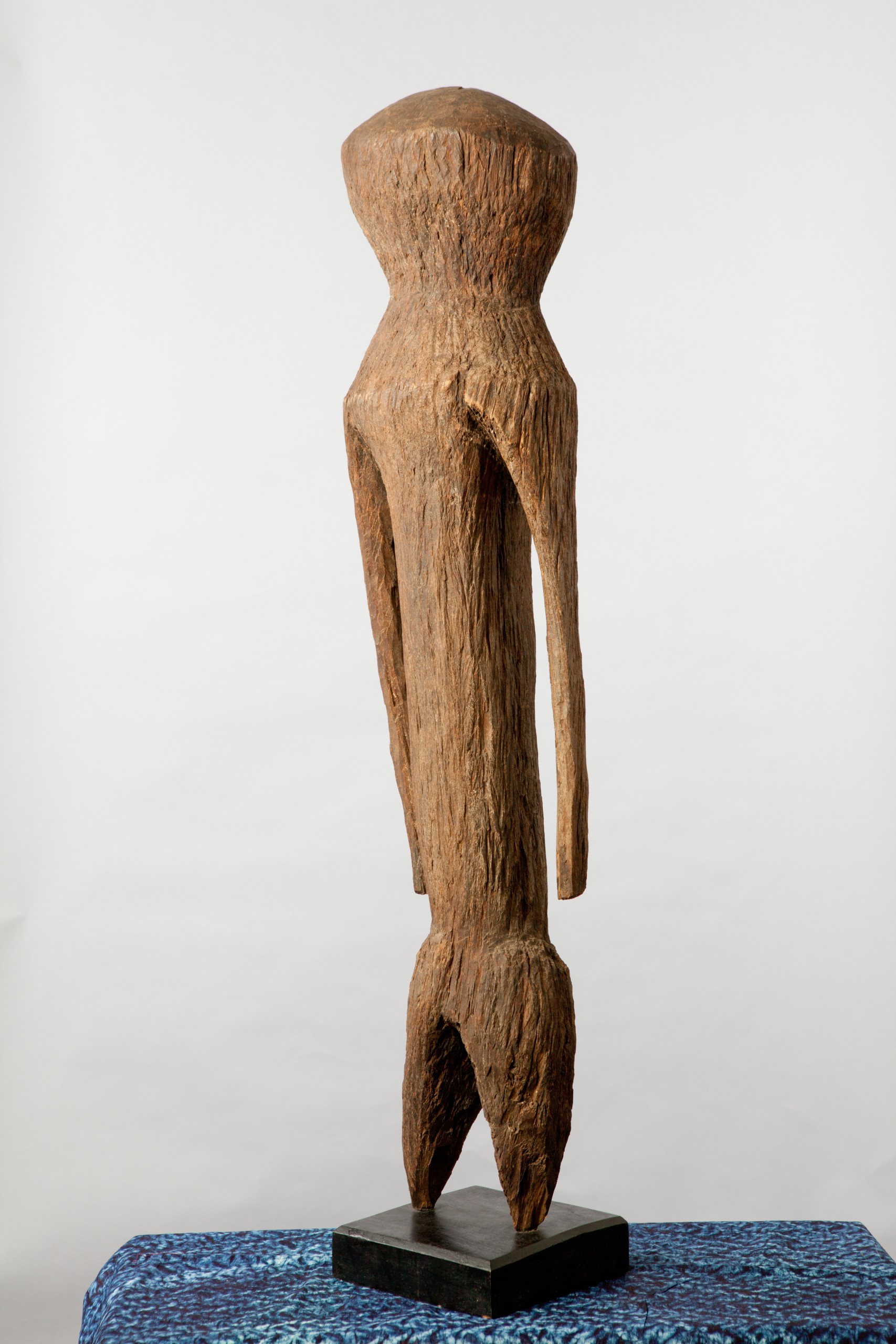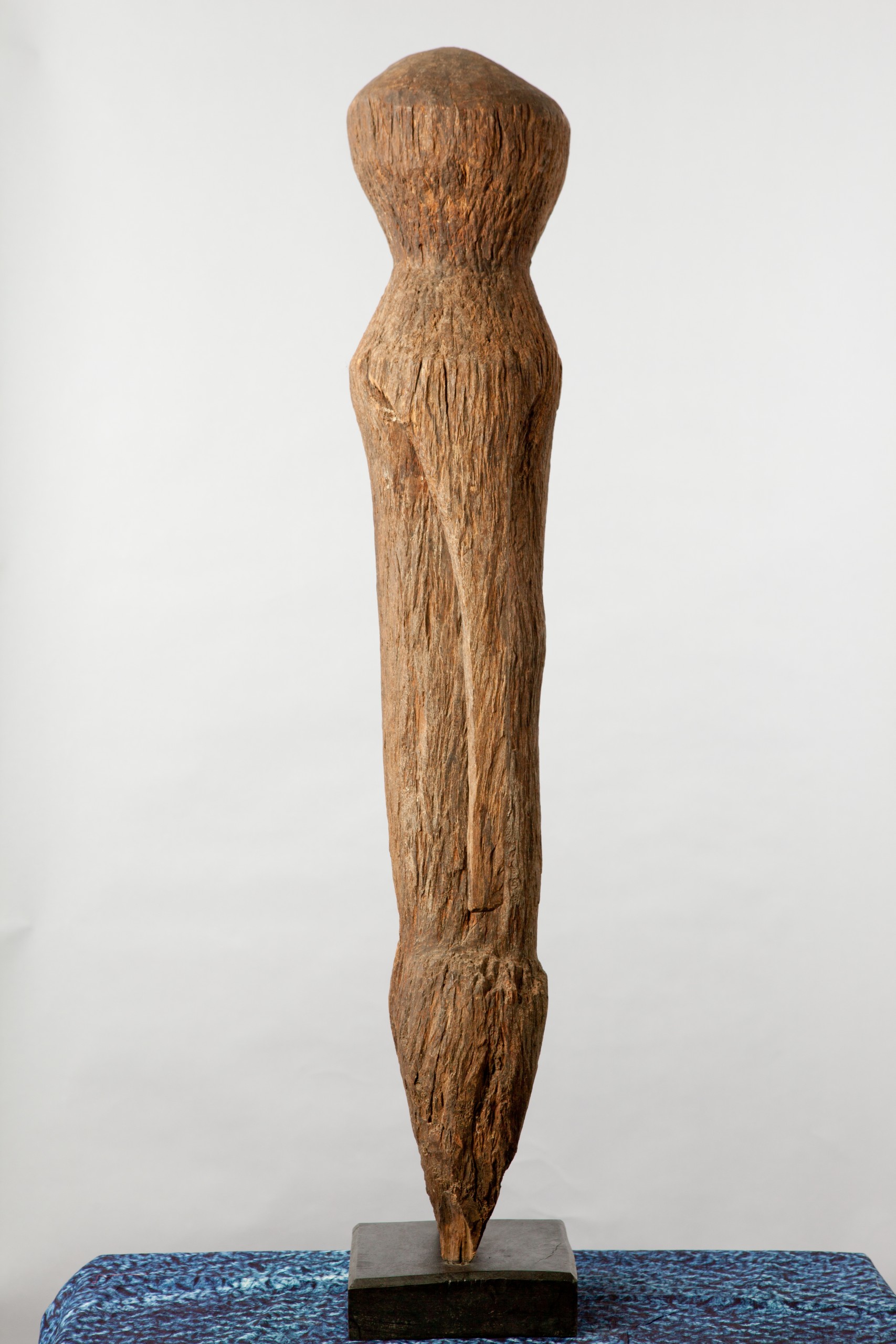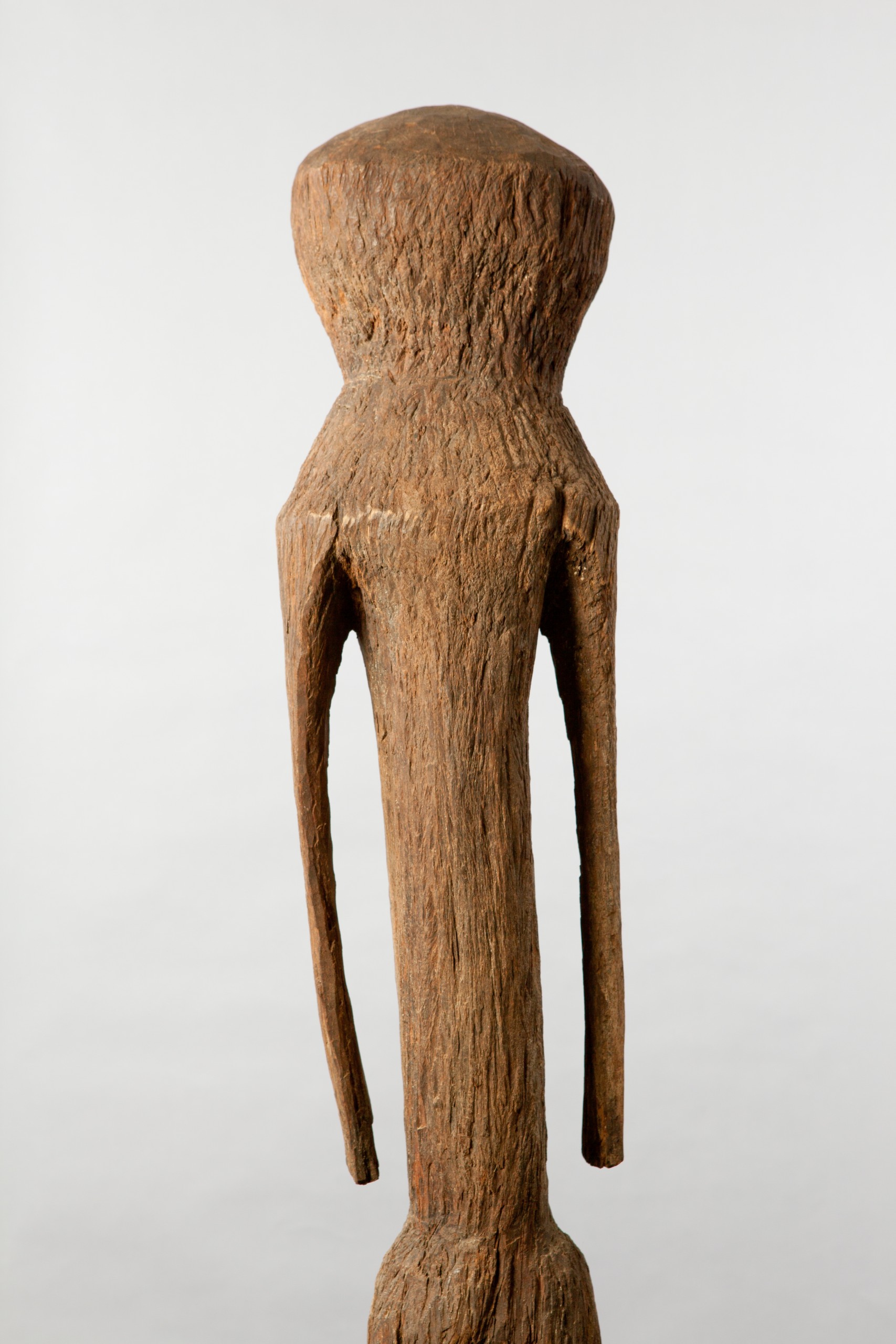See and Learn More: Moba Tchitcheri Shrine Figure
The Moba who live in northeastern Ghana and northwestern Togo are an African society that lives in patrilineal clans, in which individuals are grouped based on a common ancestor traced through the male line. The Moba have a significant focus on family ancestors, especially their original family ancestor and create figures to become closer with these ancestors. As a result, the Moba wooden figures are a major focus in Moba ritual life. (Kreamer, 1987, 52)
Moba woodcarvers (tikpierroa) create wood figures called tchitcheri to represent their ancestors and to place as a shrine offering. In general, carvers usually are males and any male within the society can become one. They use a tool called an adze, which is a tool usually only reserved for carving. However, Woodcarvers who carve tchitcheri must be the sons of diviners. Although, being a diviner’s son is important when creating tchitcheri, it is possible for non-diviners sons to carve them through the use of protective medicine, however this is considered dangerous. (Kreamer, 1987, 53)
Moba figures are made in the likeness of the human form, but are abstract. Typically, figures have short legs in comparison to the rest of the body, limited facial features, lack of detailed hands and feet, and gender is only rarely indicated. The Moba found in the PLU collection have all of these characteristics and the genders are unknown. The figures also show sign of wood deterioration and wear, which could be an indicator that the figures were actually used by a Moba household. (Kreamer, 1987, 52)
Not every individual or household will have a Moba figure; they are only made for people who specifically request one to be carved for them. However, when commission one, there are certain rules that must be followed. In order for a client to commission a figure, they first must go to a diviner. During this process, a diviner and the client will meet and the following will occur, “
God and the ancestors are alerted by the diviner to the proceedings in the typical way that the Moba announce their presence when calling on neighbors; by clapping their hands together, asking to be recognized, and then stating in a straightforward manner the purpose of their visit.” (Kreamer, 2004, 184)
After this occurs, the diviner will create a connection between himself or herself and the client by using a staff that will be held between the both of them. Then, questions about the Moba figure will be asked and the answers will be indicated by how the staff lies. By the end of the session, the diviner will have determined for the client, which size and gender they should commission. The fact that a diviner must approve the creation of these figures indicates how important they are to ritual life. (Kreamer, 2004, 184)
There are three different types of Moba figures; small, medium, and large. The small figures (H: 7-10 cm, Diameter: 15-20 cm), called Yundu tchitcheri, are used in personal Yundu shrines and are believed to enhance the shrine. They are created for protection from God, and do not represent a specific person or ancestor. Individuals use Yundu shrines and the tchitcheri to give them a direct link with God. Typically, adult males and females have these small figures. If one is having a difficult time in life, a diviner may suggest that a person have multiples of these small figures. Such, figures are given offerings of millet flour, water, and sacrificial fowl.
The middle-sized figures are called bawoong tchitcheri (H: 25-90 cm) and this is the type found in the PLU collection. These figures are used in household shrines, which is distinct from a figure used specifically for individuals or the community, and are erected outside a home. This figure is used to ensure good health, the prosperity of domestic animals, and a successful harvest for the household. These carvings represent ancestors, specifically recently departed family members.
The third type of figure is the largest sized called tchitcheri sakab.(W: 25-30 cm). These Moba figures are erected into the ground to as deep as the waist level of the figure. These figures represent more ancient ancestors. Local clans often say that a founding member erected these bigger figures and that most of these carvings have been around for a significant time. When inquiring about these figures, individuals often state that they have been around for many generations. Today such figures are rare and only a few can be found. (Kreamer, 1887, 53-55)
Moba figures are central ritual objects utilized by the Moba people in an individual, household, and community setting. Each different form of the figure serves a different purpose and represents a different ancestor. Additionally, the rules that surround the making of the figure, such as who will carve it and the diviner who decides if it should be carved indicate that this is an important religious object.
– Michaela Thompson ’16, History and Anthropology
Sources
Kreamer, Christine. “Moba Shrine Figures.” African Arts, 20:2, 1987.
Kreamer, Christine. “Seeing Between Worlds: a Moba Figure.” In Frederick Lamp (ed.) See The Music, Hear The Dance: Rethinking African Art at the Baltimore Museum of Art. Munich: Prestel, 2004.





